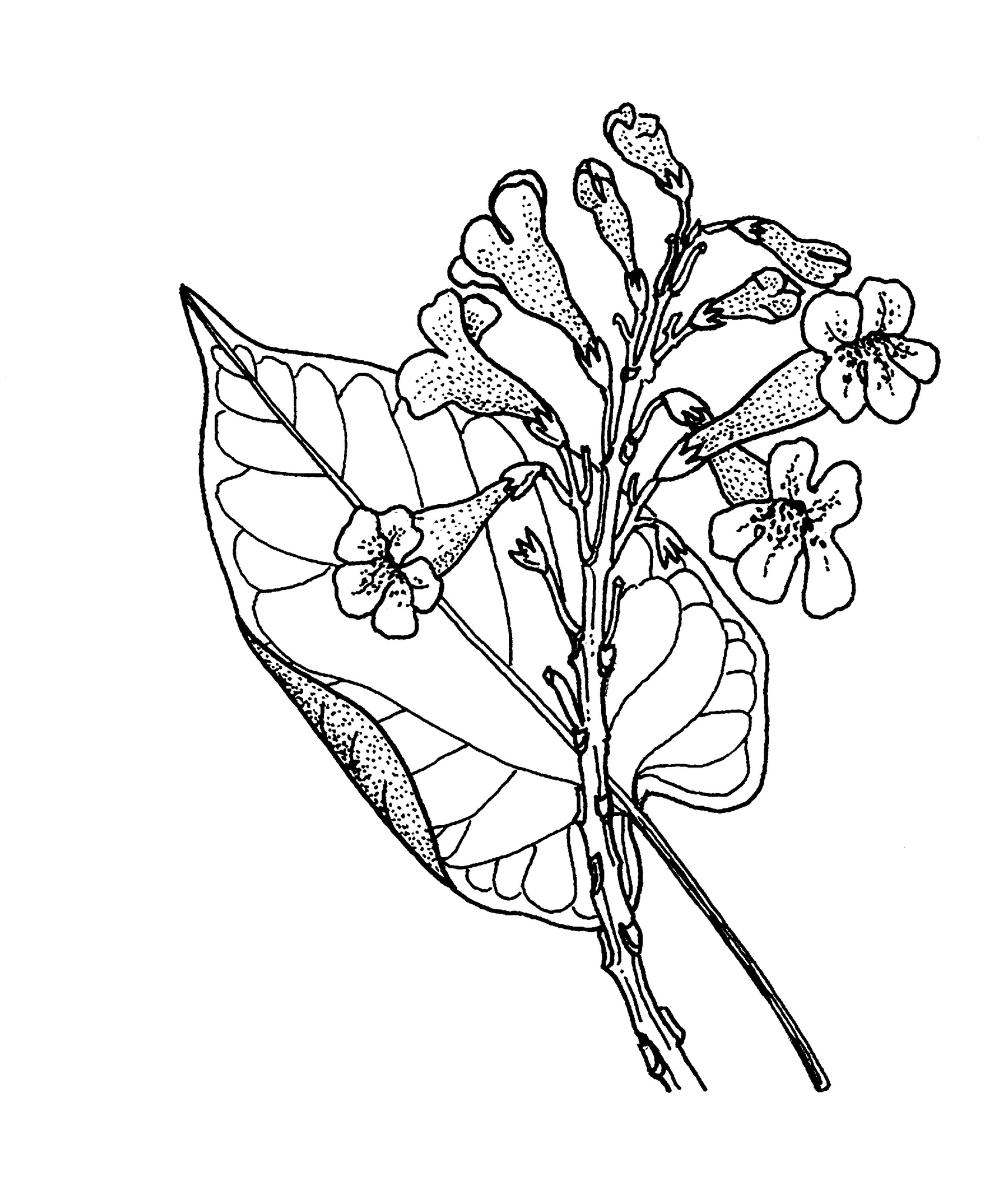
Tree to 20 m tall, branching, often monopodial when young. Bark smooth, greybrown. Leaves entire, broad-ovate, 14-25 cm long, 7-17 cm wide, pubescent below with stellate hairs; apex acuminate. Young shoots pubescent. Flowers appear before the leaves, in cymes pedicellate on the panicle branches. Calyx lobes straight, shorter than the tube. Corolla 8-10 cm long, white, sometimes lilac-shaded, large purple spots inside tube; tube almost straight, longer than lobes. Capsule narrow-ovoid, 6-8 cm long.
S and C China
[P. mikado Ito]
P. _australis Hu S.Y. and P. _taiwaniana Zhu Z.H. are natural hybrids with P. kawakamii; they differ in their blue-violet flowers and smaller capsules.
Source of timber; shelter tree.
White, foxglove-like flowers with purple spots; large fruits.
SPECIMENS SA: Adelaide (Mt Lofty Bot. Garden).VIC: Melbourne (Royal Bot. Gds).
Source: (2002). Paulownia. In: . Horticultural Flora of South-eastern Australia. Volume 4. Flowering plants. Dicotyledons. Part 3. The identification of garden and cultivated plants. University of New South Wales Press.
